Usnea, also known as Old Man’s Beard, is not a plant but a lichen— a symbiotic relationship between an algae and a fungus. Lichens appear to be a single plant, but they are really fungus and algae that grow together.
The botanical name is Usnea spp, but there are many different species in this genus all of which are medicinal.
The botanical name is also the common name: simply called “usnea”. Many refer to this lichen as “Old Man’s Beard” however, like many common names, that can refer to various plants. So the botanical name is always the most accurate.
Identification
Usnea barbata is one of the most well-known species, however, the various species of usnea are difficult to distinguish from one another. The good news is they are considered to have equivalent medicinal uses.
The best way to positively identify usnea is to gently pull apart the strands and see that it has a stretchy white core in the center. Usnea is the only lichen with a white core.
As the greenish-grey coating or covering (the algae) of the strand separates, it will reveal a white thread (the fungus) in the middle. That center white thread stretches like a rubber band before breaking.
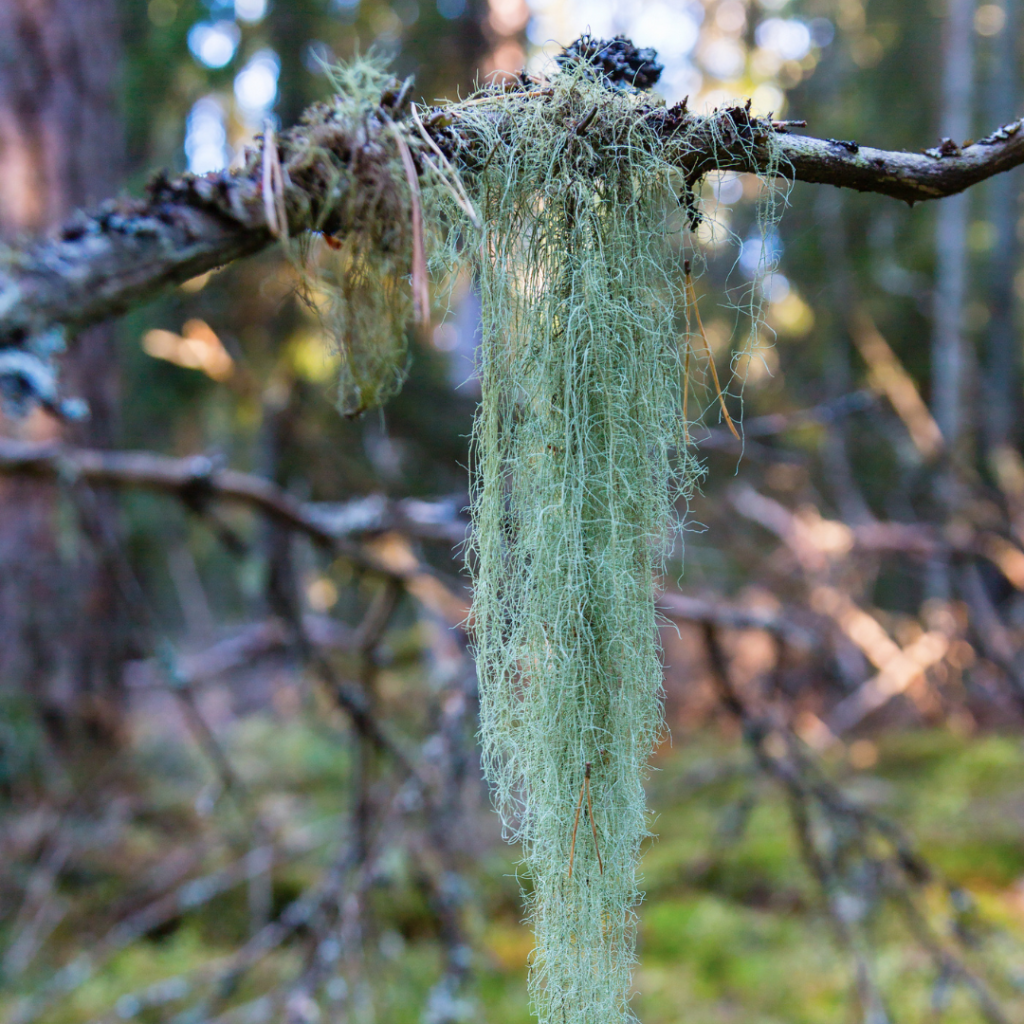
Harvesting
Lichens are very slow growing so as a sustainable practice, the intact lichen should be collected from fallen branches after heavy winds or a storm, leaving what remains in the trees to continue to grow. Recently fallen or partially dried material is generally considered fresh because of its strong antibiotic and antibacterial properties. Be sure to harvest away from roadsides as lichens are accumulators of heavy metals. They are pollution sensitive and are not found growing significantly in cities for this reason. An abundance of lichen is often an indicator for the environmental health of the ecosystem.
After harvesting, I prefer to dry my usnea by laying it spread out on a screen, in a warm well venalated room. This insures that any creatures that may be inside, will leave and or die.
Wash the usnea well before you begin this drying process.
Medicinal Uses
There are a number of active constituents found in usnea, including not only its most active compound usnic acid, but also polyphenols and other antioxidants. These include:
~ Norstictic acid
~ Barbatinic acid
~ Beta-sitosterol
~ Depsides
~ Dihydrousnic acid
~ Evernic acid
~ Glutinol
Usnic acid and polyphenols are thought to provide most of usnea’s purported benefits. Compounds called depsides, depidones, and benzofurans also have health effects that contribute to its medicinal value.
What is usnea used for? Some of the conditions that its typically used to treat include:
• Human papilloma virus (HPV)
• Pain
• Fever
• Swelling
• Inflammation
• Kidney problems
• Coughs
• Indigestion
• Certain types of infections, such as those affecting the throat, respiratory tract, mouth, skin and urinary tract
• Skin wounds that wont easily heal
• Possibly certain types of cancer, due to its antioxidant and free radical-scavenging capabilities
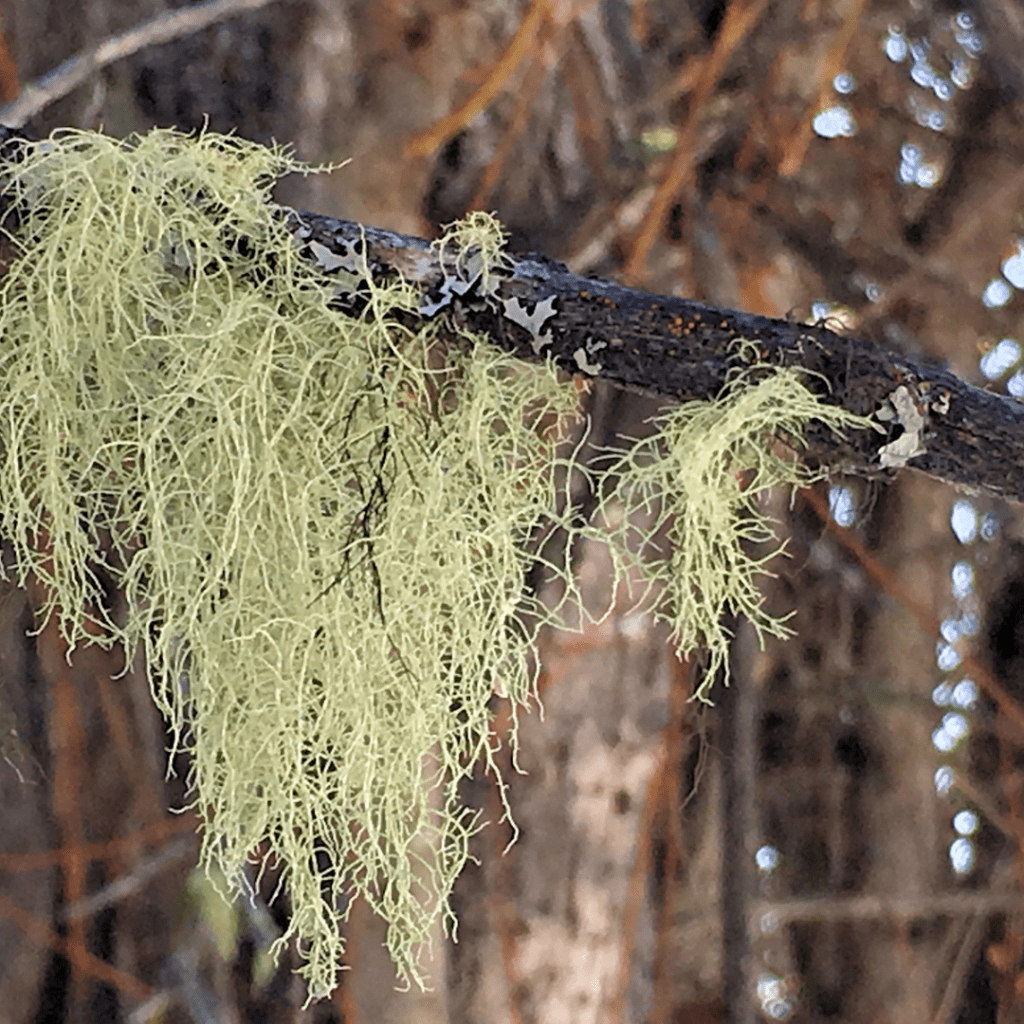
The Science
Wound Healing: Usnic acid, one of the main active compounds in usnea, may help promote wound healing. Test-tube studies suggest that this compound may fight infection-causing bacteria, reduce inflammation, and stimulate wound closure.
Research in rats shows that usnic acid increases markers of wound healing, such as collagen formation, when applied directly to wounds. The lichens anti-inflammatory properties may be responsible. There’s also evidence that usnic acid may protect against Staphylococcus aureus bacteria (staph infection), which are often responsible for horrible, hard to treat skin infections.
May Protect Against Cancers: Usnea is rich in polyphenols, a type of antioxidant that helps fight cell damage caused by unstable compounds known as free radicals. In turn, this antioxidant activity may safeguard against various diseases, including cancer.
Test-tube studies further suggest that usnic acid may help prevent cancer cell growth and kill cancerous cells while selectively avoiding non-cancerous ones.
Antiviral & Antibacterial: Research shows that usnea has a number of anti-inflammatory and antimicrobial properties including acting as an antifungal and antibacterial against bacteria such as Streptococcus (strep throat) and Staphylococcus (staph infection). This is why you’ll find it in herbal formulas intended to help treat colds, sore throats, skin infections, wounds and more.
A few studies have been done regarding usneas antiviral activity. One older in vitro study concluded that usnea exhibited significant antiviral activity at a concentration nontoxic to the cell line used. Another older in vitro test showed usneas potential against Epstein-Barr virus (EBV or human herpesvirus-4/HHV-4). Steven Buhner reports that it is effective against the human herpes virus family of viruses.
Additionally, it’s added to a variety of cosmetics since its compounds, including usnic acid, serve as preservatives and deodorants. (They prevent bacteria from growing that can cause spillage and odor.) You’ll sometimes find usnic acid listed as an ingredient in personal and beauty products, such as skin lotions, toothpastes, mouthwash, deodorants, hair shampoos and sunscreens.
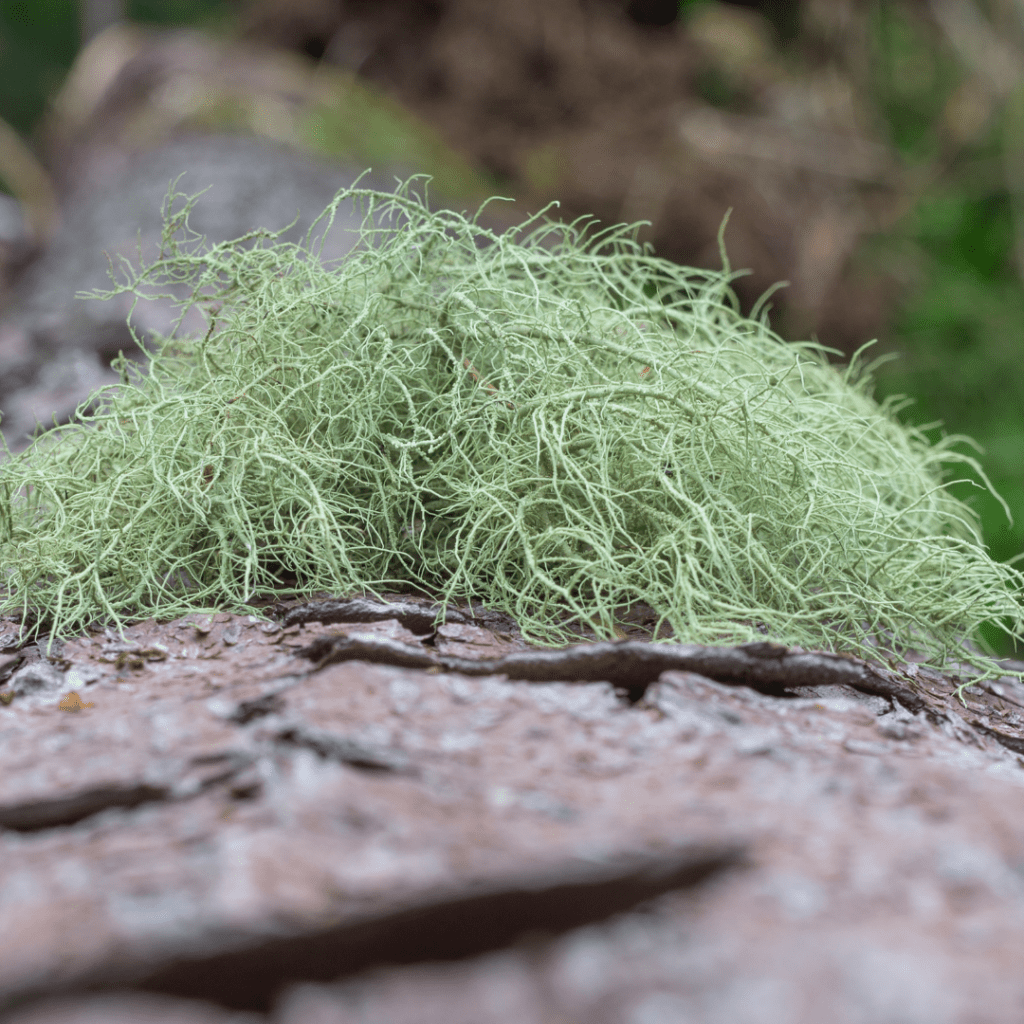
Fungal Infections: Usnea is also commonly used as an antifungal herb. It can be used both externally and internally for a variety of fungal infections of the skin, genitals, and nose (sinus infections are often caused by a fungal pathogen).
Studies have shown usnea extracts to be effective against Trichophyton rubrum, the common skin fungus causing athletes foot, jock itch, and ringworm in humans. A 2017 in vitro study showed that usnea was effective against Candida albicans, an opportunistic yeast that can cause mouth, gut, and vaginal fungal imbalances in humans.
It is worth noting that fungal infections, especially chronic ones, can be difficult to get rid of. Diet (including reduced intake of simple carbohydrates/sugars) and other lifestyle considerations have to be undertaken. Certain medicinal herbs may also be needed for extensive periods of time to fully resolve chronic fungal issues.
Urinary Health: Usnea also has an affinity for the urinary tract. Its anti-septic properties disinfect but contain no resins and tannins that can irritate or exacerbate infections. Usnea has a diuretic effect and strong antibacterial properties that help issues like bacterial vaginosis. Usnea should be consumed internally as well as externally with sitz bath in these circumstances.
Usnea can be used in the same way for its anti-fungal properties on the skin and genitals. Common female reproductive imbalances like vaginal candida and combines well with yerba Santa or sweet root and other strong anti-fungal herbs, taken internally and added to the bath.
How To Use
On The Skin: Because usnea is such a strong antibacterial, it can be used in its fresh form to pack wounds. A poultice can also be made by crushing the strands and adding some moisture. This mash can then also be directly applied to a wound and wrapped to secure it.
However, since most people aren’t using usnea while out in the woods, it’s usually made into a salve or powder.
To make a powder, simply dry and grind the usnea. Place in a tin and use as needed. Store in a cool dark cabinet.
Making a salve is also easy. This involves making an usnea infused oil first. However don’t be intimidated! Our guide How to Make Herbal Salves walks you through the complete process!
An extract can also be applied directly to skin, but it will be made from alcohol, therefore it may burn. This would be the approach for skin infections such as Staphylococcus, as the alcohol would help to cleanse away any bacteria as well.
The area should be cleaned with a tincture of usnea (and or colloidal silver) and a salve of usnea applied afterwards. Cover the wound and repeat several times a day.
As stated above, usnea can also be add to baths for genital infections or issues.
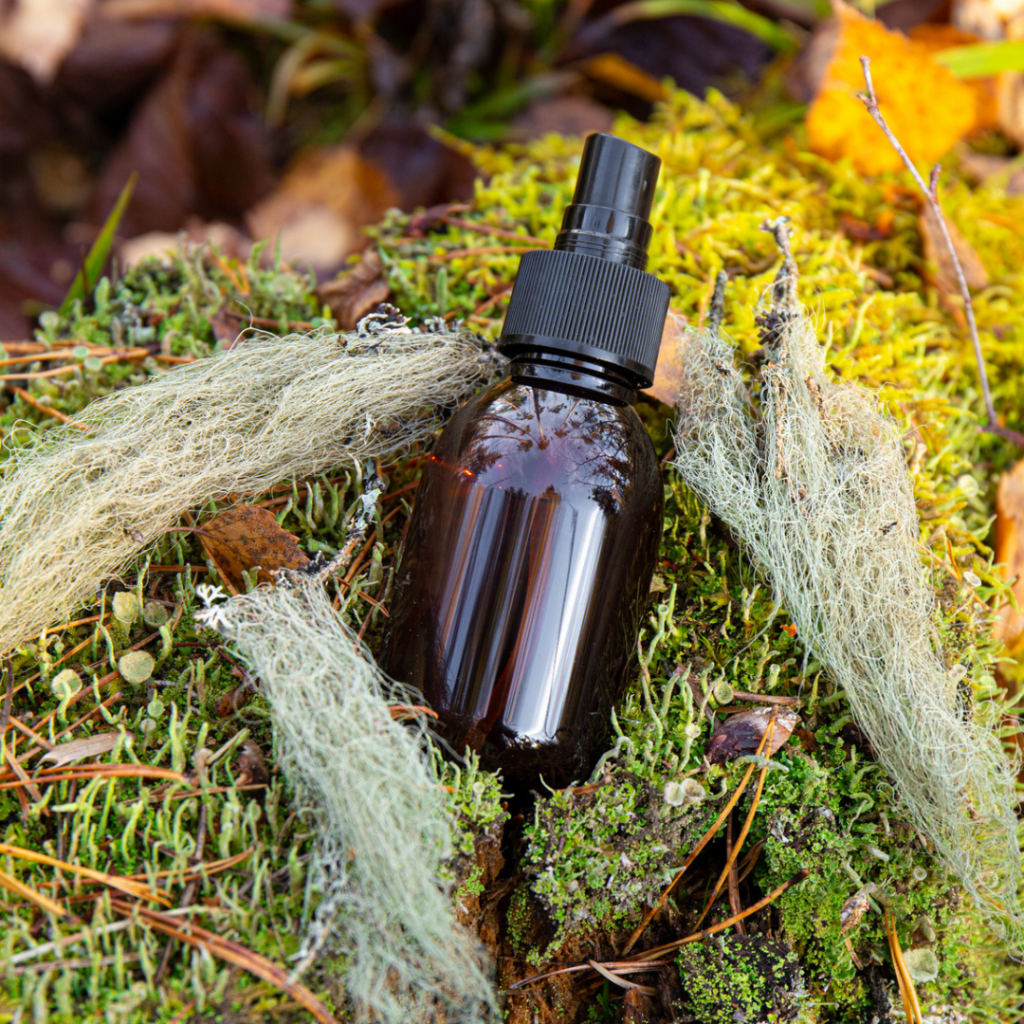
Internally
To obtain the most out of usneas benefits, it’s best taken in a Double Extraction form.
A double-extraction is the process of using both alcohol and water to extract different properties. Beneficial properties in certain lichens and mushrooms called beta-glucans, are water-soluble while other properties called triterpenes are alcohol-soluble. Using a double extraction method, we are able to obtain all of these medicinal constitutes.
Some people still drink usnea as a tea, but it’s not giving them everything it could. Double extraction is the way to go.
Today, I’m going to walk you through the process of how to make an Usnea Double Extraction!
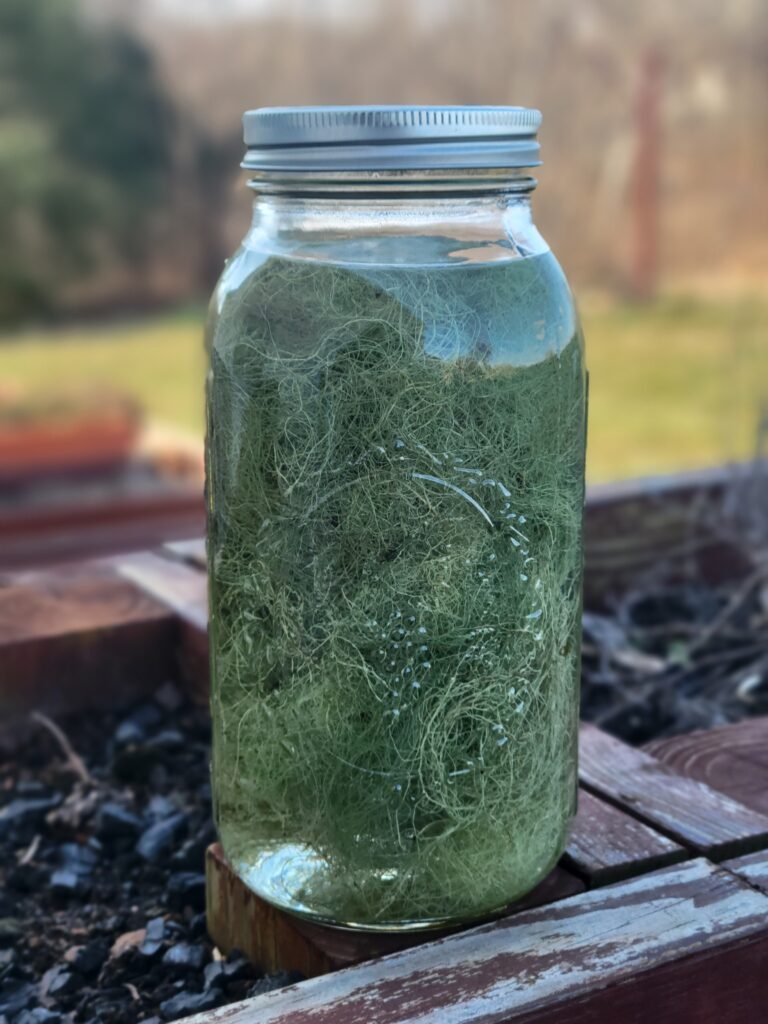
Usnea Double Extraction
EQUIPMENT
~ Sharp Knife
~ Quart size jar
~ Vodka 80 Proof
~ Cheesecloth
~ Crockpot
INGREDIENTS
~ Usnea (like mushrooms, its best to use when dried)
~ Vodka 80 proof
~ Filtered Water (don’t use tap water)
INSTRUCTIONS
Chop usnea into small pieces with a knife. Place the chopped usnea in a clean jar filling about 3/4 the way full. Pour vodka over the usnea until it is just covered. Seal the jar, and shake twice a day.
After 4 – 6 weeks, strain the usnea-infused alcohol and measure its volume before putting it in another jar. This is your alcohol extraction. Set aside the usnea while you prepare the next step.
Measure out filtered water that is double the volume of the amount of alcohol extraction you just measured. Place the Usnea into a crockpot and cover it with the filtered water.
Note: Yes you can use the same usnea that you strained. After all that’s how most people have made it for years! However, new evidence is starting to support that the alcohol can effect some of the beta-glucans we are after. Therefore if possible, use a fresh bunch of usnea for this part. If you’re going to do it this way, it is best to weigh out the amount of usnea you are using in the beginning so you have the same amount for your second extraction. If not, proceed with the same usnea that was in the alcohol.
After the usnea and water is added to the crock pot, turn it on its lowest setting and let the usnea and water cook until the water is reduced by half. Anywhere from 24 to 48 hrs. Definitely keep an eye on it as you don’t want the water to get to low.
Strain the usnea from the water. The water should be about equal in amount to the alcohol extraction. Combine the alcohol extract (tincture) with the hot water decoction.
You now have a dual-extract usnea tincture!
Label the jar with date, alcohol used, where the plant was collected, and any other info. Store tincture in a dark, cool place.
I take 1 dropper full, 2 – 4 times a day as needed, to fight viruses or infections. You can see more about tincture dosages here.
Don’t want the hassle of making your own? Purchase our Usnea Double Extraction Elixir by clicking the highlight.
Safety Considerations
Animal research suggests that diffratic acid, another usnea compound, is toxic to the liver when consumed in large amounts.
An active compound has been linked to several cases of severe liver failure, the need for an emergency liver transplant, and even death. These cases involved weight loss supplements with high levels of usnic acid, (450 mg a day in one case study). Dosages of usnic acid and diffratic acid can vary widely between supplements, and the doses large enough to produce any negative effects aren’t exactly known. Therefore, it is recommended not to take in large amounts and never as an ingredient in a weight-loss supplement.
Pregnant and nursing women should avoid as the effects are unknown. People that take medication should speak to their doctor first.
Make sure you are 100% positive of identification before you consume any plant, lichen or mushroom. Herbal medicine is still medicine and must be respected as such. View our disclaimer here.
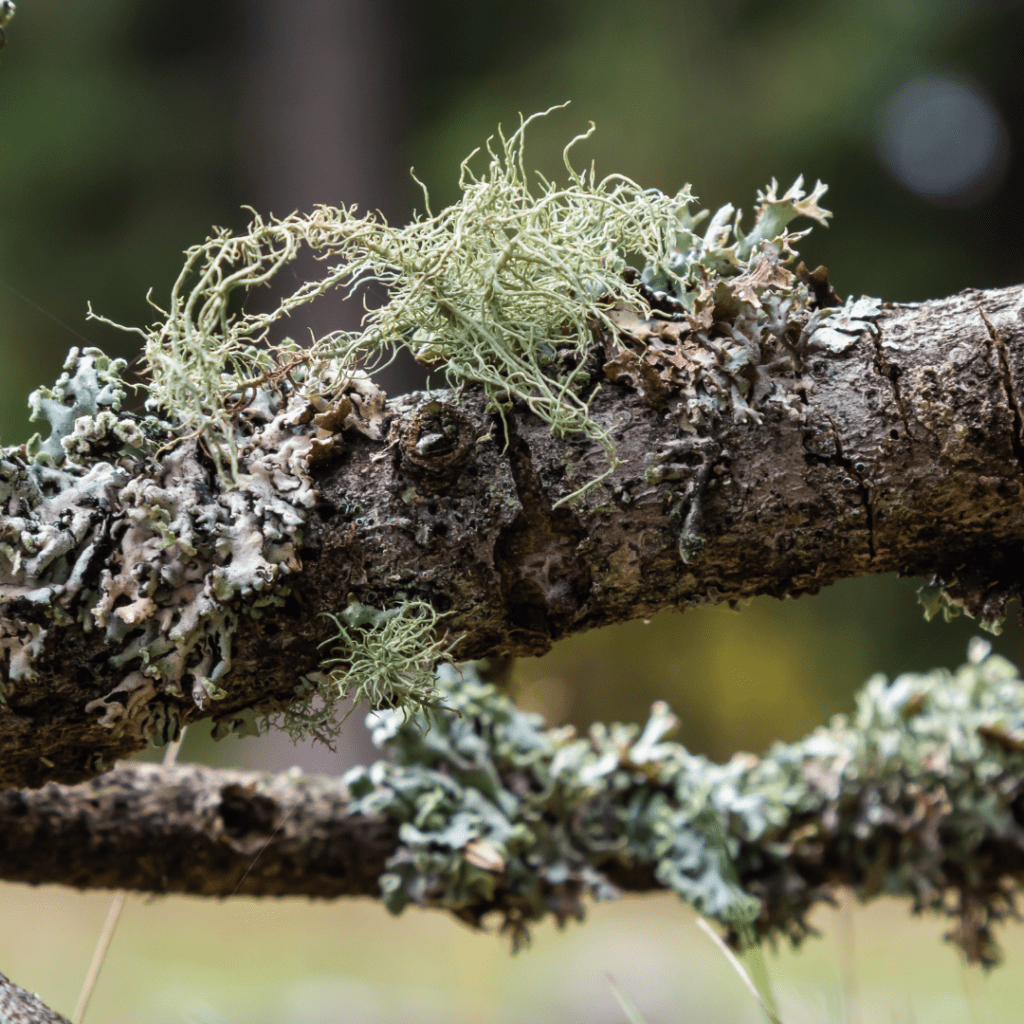
Final Thought
Usnea is such an amazing beautiful lichen, like the tinsel on a Christmas tree, it adds beauty and value to the forest that host it.
It’s prominent “medicine” reputation has been validated by science, while it continues to astonish researchers with its potential.
As always, be respectful of your harvest, and make sure you leave plenty for years to come.
Stay Wild
Sources below
https://www.ncbi.nlm.nih.gov/pmc/articles/PMC5739313/
Cocchietto M, Skert N, Nimis PL, Sava G. A review on usnic acid, an interesting natural compound. Naturwissenschaften. 2002;89:137146.
Vartia KO. The Lichens. New York: Academic Press; 1973. Antibiotics in lichens; pp. 547561.
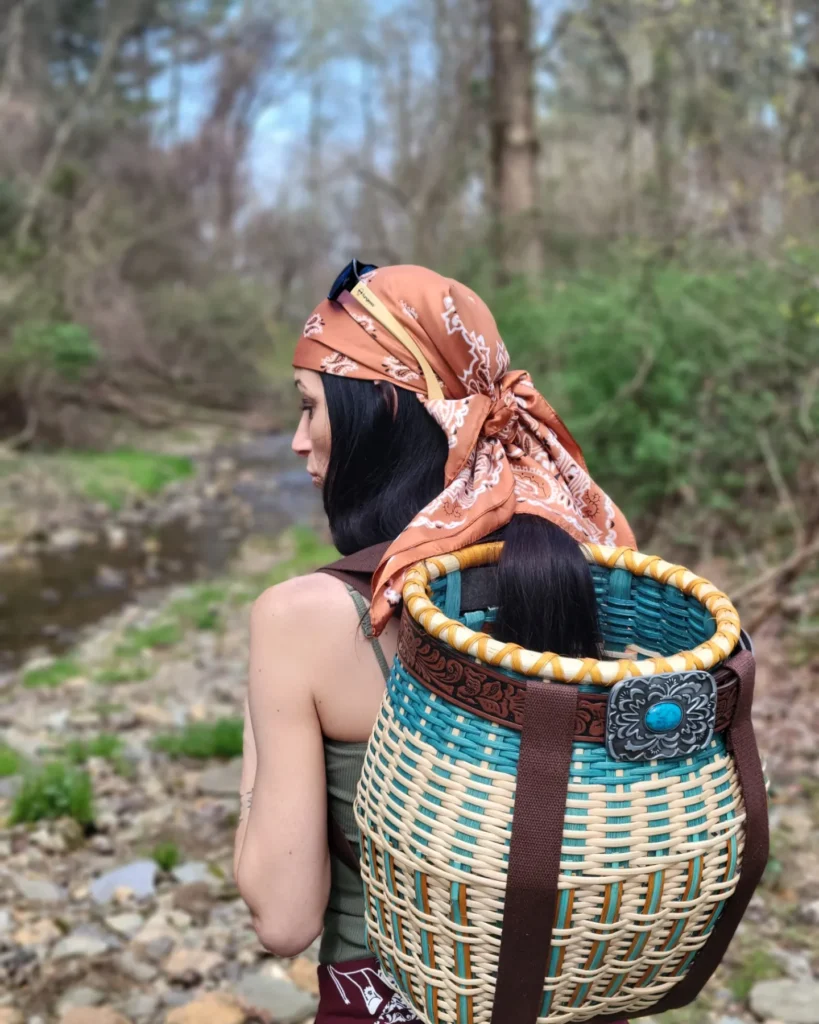
Kayce Heister
Kayce is a Clinical Herbalist, Holistic Health Practitioner (HHP), Active Forager, Wild Food Chef and Mother of three. She has spent the last 18 years practicing herbalism and natural health, and spends most of her time educating others on the amazing potential the natural world can offer.